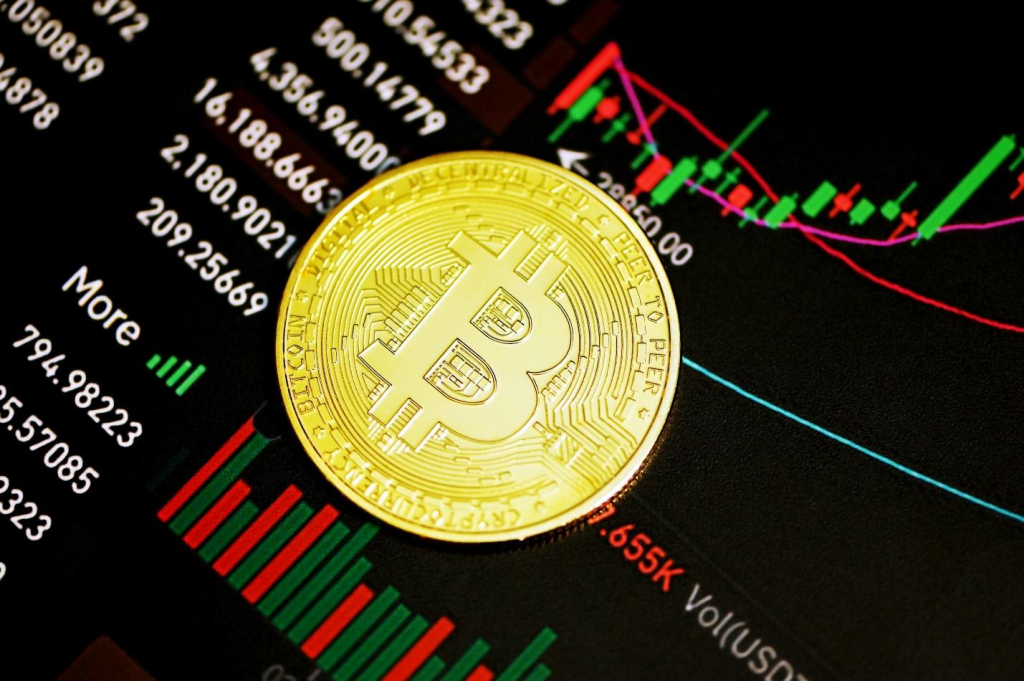Bitcoin mining is the process through which transactions are officially recorded on the blockchain, as well as the way in which new coins are launched on the marketplace. To complete the procedures, miners require specific hardware and software that have the ability to generate cryptographic numbers that are at least equal to or less than a number set by the BTC’s network difficulty algorithm. The first miner to find the solution to the problem will receive Bitcoin as a reward, and then the process begins anew.
The equipment is quite expensive, so purchasing it and delving into the world of mining is definitely not the type of investment you should make lightly. However, given the fact that the BTC price prediction estimations show that the king of crypto will keep on getting more important for the ecosystem, it makes sense that an ever-growing number of users are thinking of trying it out for themselves and earning rewards in this manner, too.
The process has always existed, but it seems that the latest tech developments are changing the way in which it operates as well, with some miners moving on to different opportunities.

Image source: https://unsplash.com/photos/gold-round-coin-on-black-surface-Lta5b8mPytw
Turning to AI
In 2024, Bitcoin underwent its latest halving during which the block rewards were cut to 3.125 BTC, decreasing the miners’ income by 50%, hence the name. Combined with the steep electricity costs, the expenses required for maintenance, and the growing competition, traditional mining has become increasingly less profitable. Many have begun struggling to retain their profit margins and have started exploring other revenue sources as a result. Now, it seems like AI is the next step, and given the technology’s potential, this shift will certainly be monumental.
Mining companies have access to power infrastructure and data centers that the regular miner cannot access. As the demand for artificial intelligence solutions continues to grow, many have begun upgrading or repurposing their ASICs in order to keep up with the demand. As a result, they have begun moving to inference workloads and AI training. This requires a lot of electricity, though, particularly in the case of large language models, enterprise-grade tools, and autonomous systems. Yet, that hasn’t deterred the tech-savvy crowd, as the people know that this is the future.
Leveraging the existing data centers and updating the GPUs is the most sustainable choice, and several miners have begun providing AI cloud functionality or renting out spare capacity. The diversification lets them generate non-crypto income streams that are fairly steady and reliable. Cryptocurrencies have always been quite challenging to work with, given their volatility, with revenue levels never being fully certain.
Getting ready
According to Binance.com founder Changpeng Zhao, the crypto market cap level “could reach $5 trillion as institutional demand grows.” There is, therefore, no denying the importance of these assets for the larger financial marketplace, especially since an ever-growing number of customers is looking to add them to their portfolios as a means of promoting diversification and continuity for their capital. While some have already started earning revenue from working with artificial intelligence, other platforms are steadily building the foundations of their future AI opportunities.
For example, Riot Platforms has already begun assessing the potential to turn 600 megawatts at its facility, headquartered in Corsicana, Texas, into an HPC (high-performance computing) infrastructure. Significant AI contracts haven’t been secured yet, but the facility has 1 gigawatt of computing power, providing it with a distinct advantage. During the first quarter of the year, the company mined over 1,500 BTC, earning almost $143 million in revenue just from mining, numbers that indicate its main business areas remain robust and keep performing well.
MARA Holdings has the largest Bitcoin treasury among all mining enterprises, owning a substantial 50,000 BTC. Its particular AI strategy is focused on edge computing, a distributed paradigm that brings storage and data processing closer to the source of the data instead of relying exclusively on centralized data centers. It developed the MARA 2PIC700 immersion cooling system that can support even the most intensive computing tasks. While the infrastructure is ready, the AI efforts haven’t resulted in any consistent revenue yet, with the move being more of a forward-looking strategy that has significant potential for development.
Essential considerations
Entering a new marketplace is a natural progression in such a fast-paced ecosystem, as it is the only way to keep up with demand and ensure that you maintain relatively stable profit rates. However, the shift to AI brings considerable risks alongside the opportunities. The costs can be excessively prohibitive for some, with the initial investment being the most significant. If you cannot guarantee that your long-term revenue will outweigh these costs in the long run, it is better to steer clear of this path.
Artificial intelligence clients, especially startups, can lack stability and consistent funding, meaning that you might have to deal with service interruptions and payment defaults. The reliability of the power supply should be checked as well, since AI demands high usage at all times. All processing units produce considerable heat as well, meaning that cooling is a must in order to avoid failures. Regulatory standards may be murky as well, especially when data privacy, international data hosting, intellectual property, and carbon emissions are concerned.
As more miners move to artificial intelligence, the price could start declining as a result of the competition. The strain on resources will also become more noticeable.
The bottom line
Cryptocurrencies aren’t exactly a new market anymore, but the fact that they are closely tied to technological developments has led many to be wary of them. As the market continues to move forward, both users and developers have to keep up. This means taking risks and venturing into new areas, but to ensure they’re a good idea, you must conduct thorough research first. Don’t jump into anything that doesn’t serve your financial goals, as initial investments are required from you as well.
The blockchain ecosystem will continue to change and transform over the years, and staying informed about what’s happening and finding the best ways to capitalize on these shifts is the only way to remain profitable.



